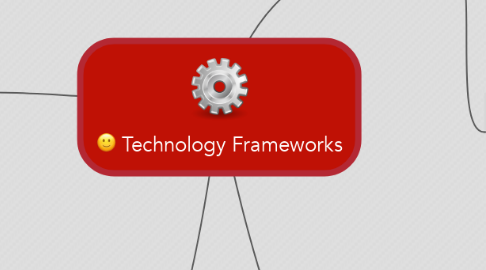
1. Philosophy of Teaching
1.1. Teachers develop a written statement in how they believe technology should be incorporated into their teaching
1.2. Includes technology in the classroom and online work outside of the classroom.
2. SAMR
2.1. Redefinition: Tech allows for the creation of new tasks, previously inconceivable
2.2. Modification: Tech allows for significant task redesign
2.3. Augmentation: Tech acts as a direct tool substitute, with functional improvement
2.4. Substitution: Tech acts as a direct tool substitute, with no functional changes
3. 21st Century
3.1. Meta Knowledge
3.1.1. Problem Solving and Critical Thinking: The ability to interpret information and make informed decision based on such information
3.1.2. Communication and Collaboration: The ability to articulate oneself through all media of communication while being an active and respectful listener.
3.1.3. Creativity: Apply a wide range of knowledge and skills to the generation of novel and worthwhile products, and the ability to evaluate, elaborate, and refine ideas and products.
3.2. Foundational
3.2.1. Core Content: Applying mathematical ways of thinking to solve everyday problems or applying scientific ways of thinking to understand the natural world.
3.2.2. Digital and Information Literacy: The ability to effectively and thoughtfully evaluate, navigate, and construct information suing a range of digital technologies and this to function fluently in a digital world.
3.2.3. Cross-Disciplinary: Integrate and synthesize information across fields or domains, such as the application of knowledge to new contexts in the pursuit of specific end goals.
3.3. Humanistic
3.3.1. Life and Job Skills: The ability to manage and organize one's efforts, and coordinate and organize relevant and important information.
3.3.2. Cultural Competence: Effective communication, collaboration, and appreciation of ideas and emotions of all types of individuals.
3.3.3. Ethical and Emotional Awareness: The ability to intuit the feelings of others, have a deep understanding of human emotions and successful human interactions.
4. TPACK
4.1. Venn diagram is used to show Combination of TK (Technological Knowledge), CK (Content Knowledge), and PK (Pedagogical Knowledge)
4.2. TPK (Technological Pedagogical Knowledge)
4.2.1. TK includes: using computers and operating systems, operate technologies, manipulate programs/software/documents, learn new technologies etc.
4.2.2. PK includes: students thinking/learning, classroom management/lesson plan development, practices/methods of teaching or learning, evaluating student understanding etc.
4.3. TCK (Technological Content Knowledge)
4.3.1. TK includes: using computers and operating systems, operate technologies, manipulate programs/software/documents, learn new technologies etc.
4.3.2. CK includes: subject manner, rules of evidence and proof, facts/concepts/theories etc.
4.4. PCK (Pedagogical Content Knowledge)
4.4.1. CK includes: subject manner, rules of evidence and proof, facts/concepts/theories etc.
4.4.2. PK includes: students thinking/learning, classroom management/lesson plan development, practices/methods of teaching or learning, evaluating student understanding etc.
